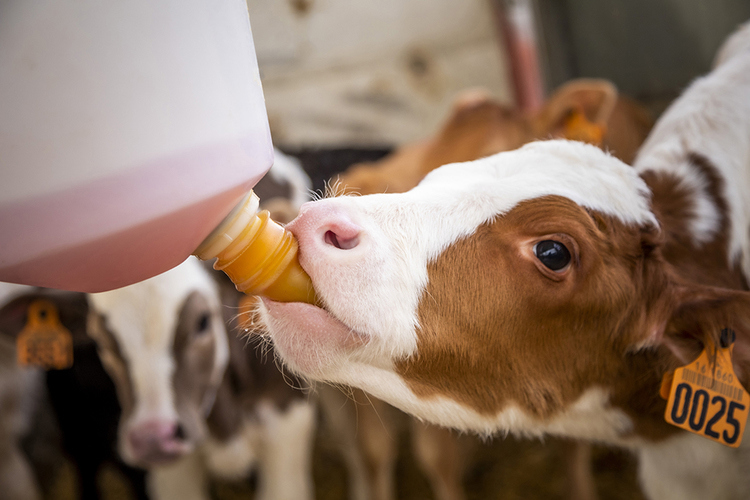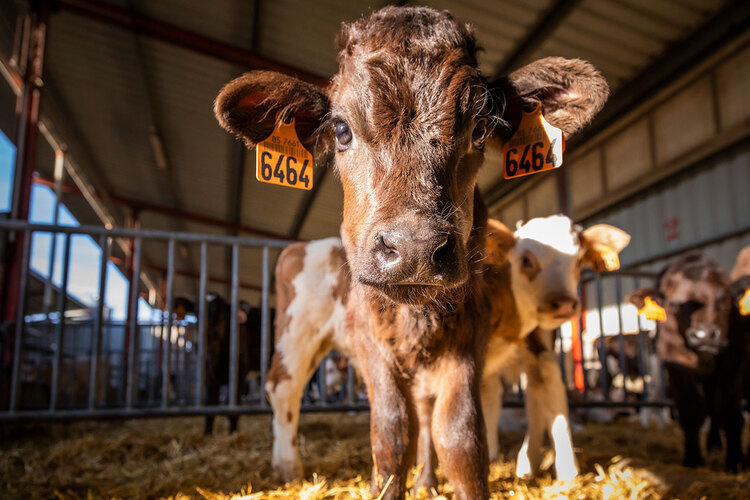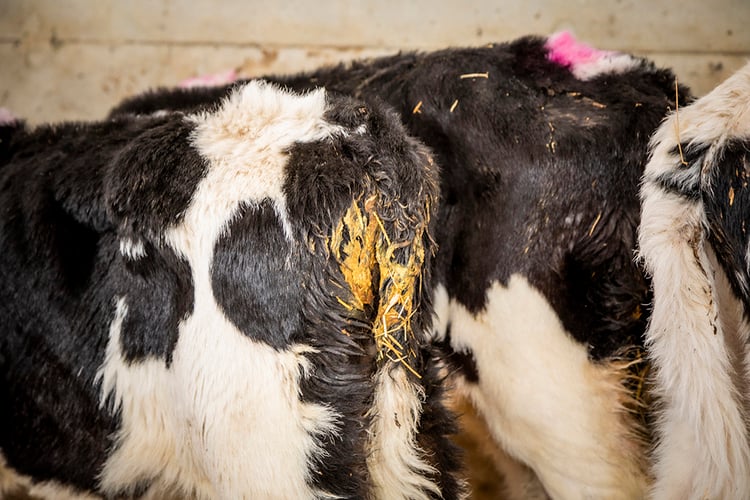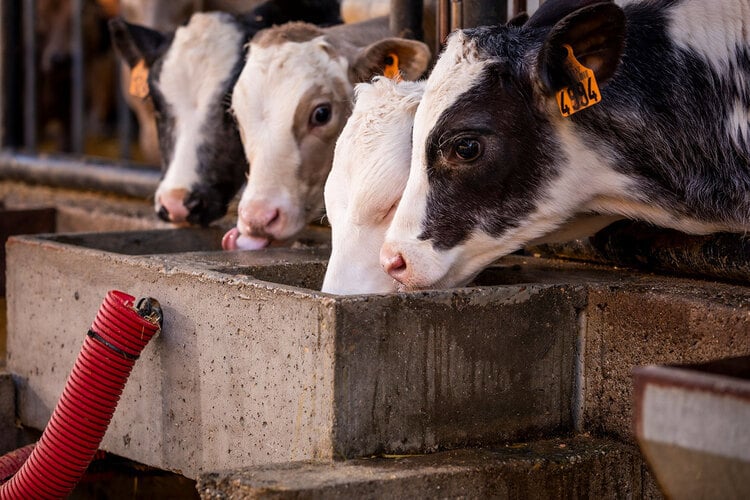
- LifeStart
- Lifestart themes
- Lactobalance
Key takeaways from the research
- Transport stress in beef calves can result in losses of potassium and severe dehydration in combination with depletion of energy reserves
- Supplementation of beef calves with a potassium-based electrolyte product in combination with glycerol after transport increased water intake and rumination activity

Effects of post-transport stress can be mitigated with potassium and glycerol.
The water and electrolyte needs of beef cattle that are dehydrated as a result of feed and water deprivation are very specific. If animals are being supplemented with a hypotonic supplement with high levels of potassium and glycerol, their intake of both water and feed goes up, resulting in them becoming less dehydrated and losing less body-weight[1]. Work was carried out by the University of Padua[2] under practical farm conditions, to study the effects on water and feed intake, as well as body condition score, rumination and clinical parameters of this supplement in beef cattle when provided after transport.
Materials and methods
This trial was carried out in a commercial beef farm in Italy with a housing capacity for 600 Charolaise bulls. Animals are imported from France and arrive with an average live weight of around 415 kg after being transported for a period of 10 to 12 hours. Imported bulls aged from 12 to 15 months old. During the first 24 hours after arrival, all bulls are fed good quality hay and straw. From day 2-7, they receive a special adaptation diet consisting of hay, corn (silage and mashed), beet pulp, wheat straw and bran, soybean meal and complemented with hay, straw and a supplement for pulmonary support.
A total of 336 animals were included in the trial, distributed over six different batches. Within each batch, two groups of 14 animals were treated with the oral electrolyte solution containing potassium and glycerol through their drinking water for the first three days after arrival, whereas two control groups of 14 animals each were getting water only. Access to water in both groups was ad libitum. Animals were weighed and inspected upon arrival and groups of animals were randomly allocated to one of the four pens for the experimental period of 7 days.
Water and feed intake were recorded daily for the entire experimental period by measuring respectively replenishment of water levels and leftover feed. Clinical signs of respiratory and gastrointestinal disease (nasal/ocular discharge, ear position, temperature, cough, lameness and feces consistency), rumination activity and body condition scores were recorded at arrival and daily during the first 7 days after arrival.
Results
Differences in feed intake, body condition score and clinical signs were not found between the two groups, although there was a tendency for the animals in the treatment group to have a slightly lower consistency of faces. Significant differences between animals supplemented with the oral electrolyte solution and untreated animals were found for rumination activity and water intake (see figures 1 and 2).
Fluid intake
Figure 1, Fluid intake in litres per day. Beef calves supplemented with an oral electrolyte solution containing potassium and glycerol had significant higher fluid intakes on the second and third day, compared to the control group.

Rumination activity
Figure 2, Rumination activity recorded by direct visual observation of the number of successive regurgitation events during a five-minute interval. Beef calves supplemented with an oral electrolyte solution containing potassium and glycerol HydraFit showed increased rumination activity during the first two days (while on treatment), compared to the control group.

Conclusion
This trial indicated that supplementing bulls with an oral electrolyte solution containing high levels of potassium and glycerol via their drinking water could attenuate the negative effects of transport and handling. Making water with electrolytes available led to an increase in water intake resolving transport-induced dehydration. Enhancing the animal’s rumination activity is an indicator of improved animal welfare.
References
[1] de Carvalho, I.P.C. and J. Martín-Tereso, 2017, Electrolyte and glycerol solution supply to feed deprived bulls before slaughter, Proceedings of the annual congress of the EAAP, Tallin, 68: 384.
[2] Calsamiglia, S, The use of an electrolyte hydration supplement for reducing transport stress in beef cattle, Master thesis University of Padua in cooperation with Trouw Nutrition, Department of veterinary medicine, animal production and health, academic year 2017/2018.






